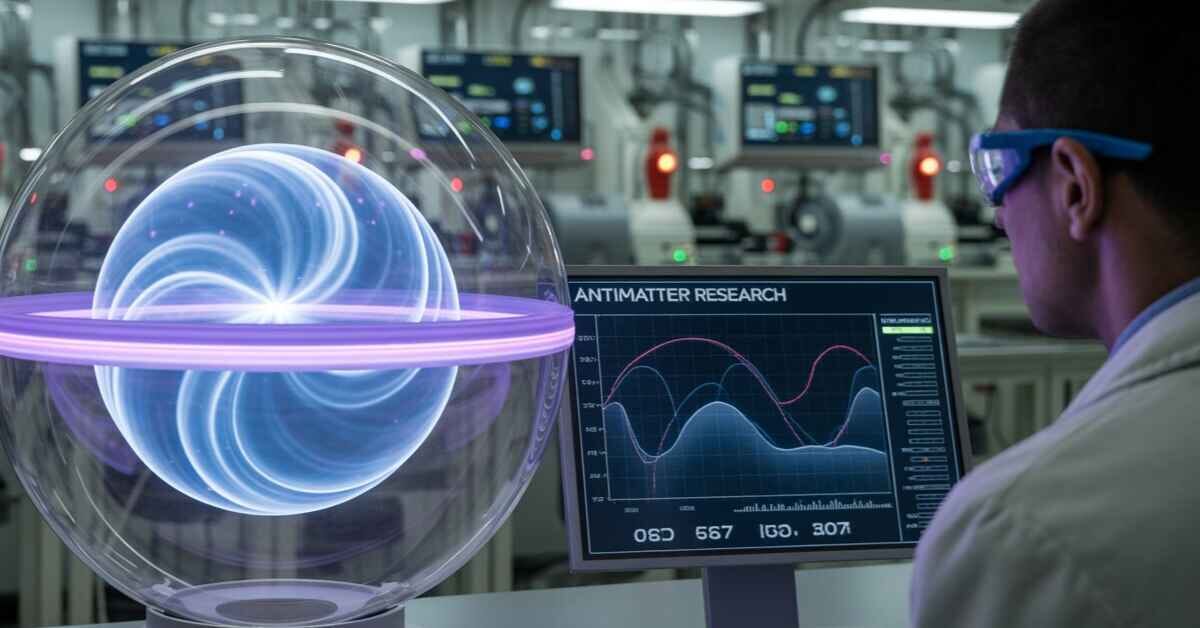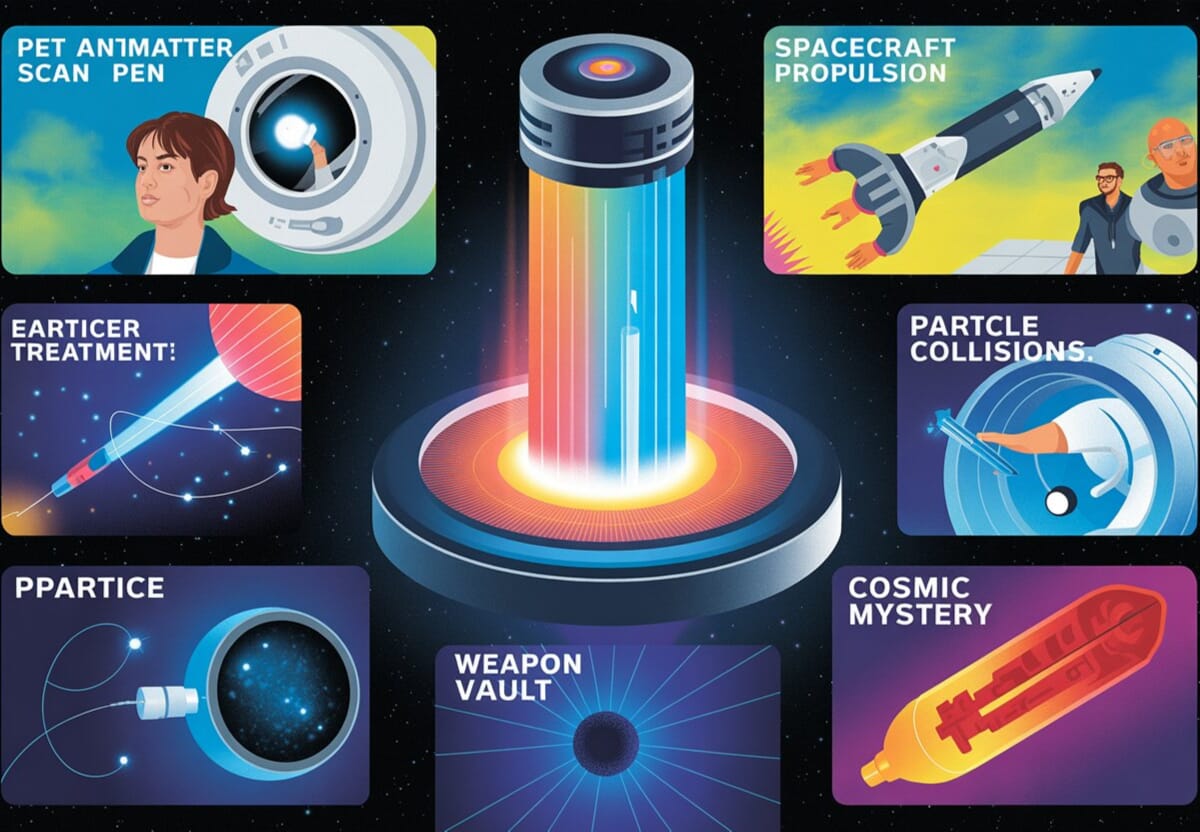
Antimatter may sound somewhat like something straight out of science fiction. It is very real and already practically useful in ways that touch both science and medicine. Antimatter consists of particles opposite those constituting regular matter; for instance, the antimatter partner to the electron is called the positron, which is similarly structured but instead charged positively, not negatively.
Particles of matter in contact with their corresponding antiparticles mutually annihilate each other in a flash, explosive release of energy. Such rudimentary physics gives antimatter its force and mystique. For example, it is produced only in minute quantities in laboratories like CERN and only then for specific applications. So, here are 7 real examples of antimatter in use. We focus on what is antimatter used for in real applications.
7 real applications of antimatter.
Antimatter is one of the most powerful components known to science. Examples are below:
Medical Imaging: Positron Emission Tomography (PET)
Hospitals utilize positrons in positron emission tomography (PET) scans. A radioactive tracer emits positrons upon decay when injected into the body. When positrons come into contact with electrons, they release gamma rays that are detected by scanners. This produces clear images for identifying tumors or studying organ function.
Cancer Treatment Research (Antiproton Therapy)
CERN scientists conducted tests to see whether antiprotons could be directed to cancer cells. Upon stopping in tissue, antiprotons give off surplus energy, which may produce a much more effective kill of tumors than conventional radiation. This is still experimental, but it may develop into a new form of cancer treatment.
Fundamental Physics Experiments
At CERN's Antiproton Decelerator, researchers synthesize antihydrogen, the antimatter counterpart of hydrogen. Studying it, they examine the most fundamental laws of physics, such as whether antimatter behaves the same way as matter. The results of these experiments help shed light on our universe's very existence.
Space Propulsion Ideas
Recently, NASA has been exploring antimatter as a potential rocket fuel. A single gram would release energy equivalent to a nuclear bomb. Theoretically, such energy could power a spacecraft for journeys deep into space. Practically, however, the production and storage of antimatter are prohibitively expensive, and it remains nothing but a dream.
Testing Physics Laws
Experiments are being conducted to compare particles and antiparticles and truly find out whether they are identical. Thus, for instance, the measurements of protons and antiprotons have given results precisely equal for both, even at the level of very high precision. Other projects test whether antimatter falls under the influence of gravity just like matter. So far, results show no difference.

Because annihilation converts 100% of mass to energy (via E = m c2), antimatter is often cited as an ultimate energy carrier or storage medium. In principle, combining a kilogram of matter with a kilogram of antimatter would release about 1.8 × 1020 joules.
In practice, however, antimatter is far too scarce and expensive for power generation. All the antiprotons ever produced to date (on the order of 10−8 grams) would yield only about 3 × 106 joules, which is roughly the energy required to boil one liter of water.
Future Energy Source
Since annihilation converts all mass into energy, antimatter has sometimes been regarded as the perfect fuel. However, it is currently impossible to realize this idea in practice: even the creation of only a nanogram costs millions of dollars. For now, antimatter power is a theoretical term.
Do you know what, the Hiroshima atomic bomb ("Little Boy") released about 63 terajoules (TJ) of energy. But 1 gram of antimatter + 1 gram of normal matter releases 180 TJ of energy. Want to know how much antimatter you need to destroy the Earth?
Scientific Tools
Antiprotons are also special probes in physics experiments. They can replace electrons in atoms, for example, to study energy levels and test theories. In these ways, nature is brought into sharper focus for scientists through these powerful tools at smaller scales.
Antimatter is more than science fiction; it already underpins hospital practices and is central to experiments at CERN. Future applications range from cancer treatments to spacecraft engines and perhaps even new forms of energy. Production today is meager, but every step forward brings us closer to realizing antimatter's full potential. Read: Is Antimatter Dangerous? What Scientists Just Revealed
